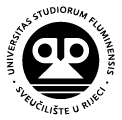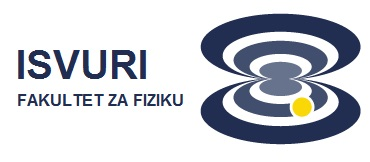Research - Laboratory for Elemental Microanalysis
The Laboratory for Elemental Microanalysis is equipped with nuclear analytical techniques based on X-ray spectroscopy, primarily for studying patterns relevant to environmental protection, but also for studying archaeological specimens and samples related to cultural heritage; for the first time in this region, non-destructive, multi-elemental analytical techniques enabled identification of the sources and intensity of individual sources of anthropogenic atmospheric pollution.
The principal analytical technique that is used in the Laboratory is X-ray Fluorescence or XRF. XRF is well established analytical technique that has been around for many decades. It has been used in various fields of science and applications wherever fast, multi-elemental analysis was required. The excitation of the sample is typically done by means of an x-ray radioactive source or, more commonly, by an X-ray tube. Once the sample is irradiated, characteristic x-rays are emitted by all elements present in the sample. These x-rays are detected by special detectors, measured and analyzed. Measured intensities of the characteristic x-rays will enable us to calculate concentration of each element of interest in the sample.
The Laboratory also collaborates with the Laboratory for ion beam interactions at the Ruđer Bošković Institute for PIXE and PESA analytical techniques.
Nuclear analytical techniques have many advantages over the conventional analytical techniques, to name only few:
AEROSOL POLLUTION MONITORING
XRF and especially PIXE methods are ideally suited for aerosol analysis. Multi-elemental capabilities combined with the ease of sample preparation, small sample mass available and non-destructiveness are capabilities that make PIXE the method of choice for aerosol analysis. On the other hand, in Rijeka with nearly 200,000 inhabitants, the air pollution monitoring is of a great importance. Although Government agencies do monitor air pollution on regular basis, an independent and continuous monitoring of air quality is highly desirable. In August 2013, the Laboratory for elemental microanalysis started with a systematic collection of PM2.5 (particulate matter of aerodynamic diameter less than 2.5 micrometers) in Rijeka, Croatia. Daily samples have been collected on stretched teflon filters. Aerosol sampler is designed to collect fine aerosols, i.e. aerosol particles with the (dynamic) diameter of 2.5 micrometers or less. This is so called anthropogenic component of aerosol pollution and represents the predominant component in most urban environments caused by manmade, mainly fissile fuel burning processes (traffic, power plants, industry, etc.). The results of NAT analysis of such samples enables scientists to identify 'fingerprints' of major pollutants and from there to pin-point the major 'culprits' and sources of air pollution in the area.
The Laboratory also collaborates with the Laboratory for ion beam interactions at the Ruđer Bošković Institute for PIXE and PESA analytical techniques.
Nuclear analytical techniques have many advantages over the conventional analytical techniques, to name only few:
- Techniques are multielemental (typically all elements from Si to U can be analysed in a single run)
- Spectra are relatively simple to interpret, therefore quantitative analysis is fast and accurate
- Analysis is non-destructive
- The material to be analysed may be minute (micron size) and in a variety of forms, i.e. solid, liquid, powder, slurry, gas, etc.
- Sample preparation is minimal often requiring only cleaning
- Wide dynamic range, i.e., concentrations from 100% to less than 1 part per million (ppm) can be analysed in a single run
AEROSOL POLLUTION MONITORING
XRF and especially PIXE methods are ideally suited for aerosol analysis. Multi-elemental capabilities combined with the ease of sample preparation, small sample mass available and non-destructiveness are capabilities that make PIXE the method of choice for aerosol analysis. On the other hand, in Rijeka with nearly 200,000 inhabitants, the air pollution monitoring is of a great importance. Although Government agencies do monitor air pollution on regular basis, an independent and continuous monitoring of air quality is highly desirable. In August 2013, the Laboratory for elemental microanalysis started with a systematic collection of PM2.5 (particulate matter of aerodynamic diameter less than 2.5 micrometers) in Rijeka, Croatia. Daily samples have been collected on stretched teflon filters. Aerosol sampler is designed to collect fine aerosols, i.e. aerosol particles with the (dynamic) diameter of 2.5 micrometers or less. This is so called anthropogenic component of aerosol pollution and represents the predominant component in most urban environments caused by manmade, mainly fissile fuel burning processes (traffic, power plants, industry, etc.). The results of NAT analysis of such samples enables scientists to identify 'fingerprints' of major pollutants and from there to pin-point the major 'culprits' and sources of air pollution in the area.
Contact
FACULTY OF PHYSICS
UNIVERSITY OF RIJEKA
Ulica Radmile Matejčić 2
51000 Rijeka
Tel.: +385 51 584 600
Fax: +385 51 584 649
Email: fizika@phy.uniri.hr














